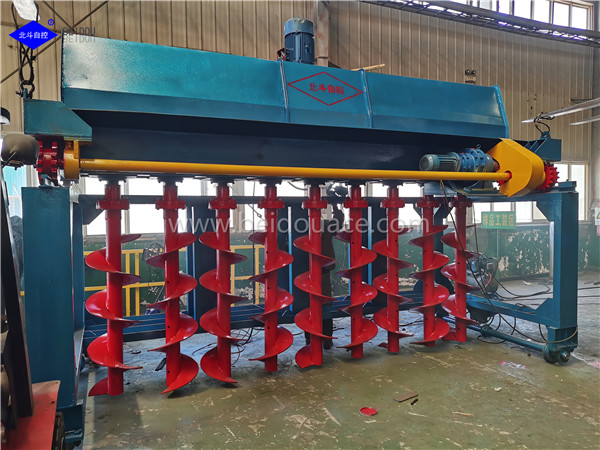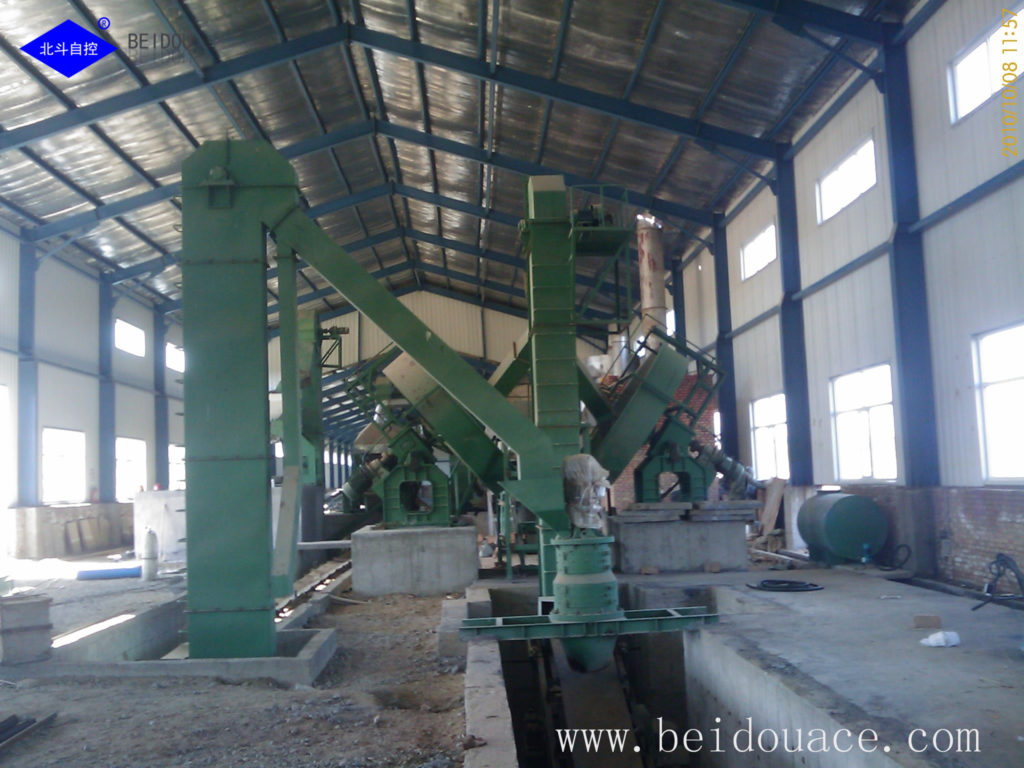Quick Look – How do High-quality Organic Fertilizers Come About?
Quick Look – How do High-quality Organic Fertilizers Come About?
The production of any kind of qualified organic fertilizer(Organic Fertilizer Machine) must go through the composting fermentation process. Composting fertilizer (Organic compost fertilizer machine)is a process in which organic matters are continuously degraded and stabilized under certain conditions through the action of microorganisms, and a product suitable for land use is produced. Compost fertilizer, as an ancient and simple method of disposing organic waste and fertilizer making, it has been widely used in many countries with the development of research and improvement of the method, because of its good ecological significance and benefits to agricultural production. It has been reported that seed beds prepared with compost can inhibit soil-borne diseases. In addition, antagonistic bacteria following the high temperature stage of the composting process can make the number of bacteria reach a high level. In the process of composting, organic matter is not easy to decompose, stable and easy to be absorbed by crops under the action of microorganisms. At the same time, microbial action can reduce the toxic effect of heavy metals in a certain range. It can be seen that compost is a simple and effective method to produce bio-organic fertilizer, which is beneficial to the development of ecological agriculture. Most organic fertilizer products only be composted and fermented for 15-20 days, which can only reach the standard of harmless. The composting process of high quality organic fertilizers takes you 45 to 60 days.
1. Principle of organic fermentation
1. Transformation of organic matter in the composting process
2. Mineralization of organic matters
3. Humic process of organic matter
2. Composting fermentation process(you may be suggested: turning machine)

3. The fermentation process of organic compost can be simply divided into the following four stages
1. In the early stage of composting in the heating stage, the microorganisms in the composting are mainly of medium temperature and good air quality, and the most common ones are non-spore bacteria, spore bacteria and mold. They start the fermentation process of compost, vigorously decompose organic substances (such as simple sugars, starches, proteins, etc.) under good gas conditions, generate a large amount of heat, and constantly increase the composting temperature from about 20℃ to 40℃, which is called the heating stage, or the medium temperature stage.
2. In the high temperature stage, with the increase of temperature, thermophilic microorganisms gradually take the place of the moderate-temperature species and play a leading role. The temperature continues to rise, generally reaching more than 50℃ in a few days and entering the high temperature stage. At the high temperature stage, the main species are thermophilic actinomycetes and good thermophilic fungi. They strongly decompose the complex organic substances (such as cellulose, hemicellulose, pectin substances, etc.) in the compost and accumulate heat. The compost temperature rises to 60-70℃ or even as high as 80℃. Subsequently, most thermophilic microorganisms also died or went into dormancy in large Numbers (above 20d), which played an important role in accelerating the maturity of compost. Improper compost, only a short period of high temperature, or not at all high temperature, so the decay is slow, in half a year or more than half of the state of decomposition.

3. Cooling phase when the high temperature phase lasts for a certain period of time, most of the cellulose, hemicellulose and pectin substances have been decomposed, leaving complex components (such as lignin) and newly formed humus which are difficult to decompose. The activity of microorganisms is weakened and the temperature gradually drops. When the temperature drops below 40℃, mesothermal microorganisms become the dominant species. If the cooling stage comes early, it indicates that the stacking conditions are not ideal and the decomposition of plant substances is not sufficient. At this moment can turn over pile, will pile up material mix well, make it produce the second heat, heat up, in order to promote the compost rot.
4. The volume of compost will be reduced and the heap temperature will be slightly higher than the air temperature after the compost is mature and maintained. At this time, compost should be compacted to create an anaerobic state and weaken the mineralization of organic matters so as to maintain the fertilizer. In short, the fermentation process of organic compost is actually the process of metabolism and reproduction of various microorganisms. The metabolic process of microorganisms is the process of decomposition of organic matter. The decomposition of organic matter inevitably produces energy, which drives the composting process, raising the temperature and drying the substrate at the same time. Many compost substrates carry human, animal and plant pathogens, as well as nasty organisms such as weed seeds. In the process of composting, the growth of these organisms can be effectively controlled through a short period of continuous warming. Thus, one of the main advantages of high-temperature compost is its ability to inactivate human and animal pathogens and seeds. The inactivation of pathogens and seeds is due to their cell death, which is largely based on thermal inactivation of enzymes. Enzyme inactivation is reversible at an appropriate temperature, but irreversible at a high temperature. The active part of the enzyme will decrease rapidly in a small temperature range. Without the action of the enzyme, the cell would lose its function and die. Only a few enzymes can withstand prolonged heat. Thus, microorganisms are very sensitive to thermal inactivation.

Studies have shown that heating at a certain temperature for a period of time can destroy pathogens or nasty organisms. It is usually heated at 60-70℃ (hot and humid) for 5-10min. It can destroy the activity of the non-dormant bodies of non-spore bacteria and spore bacteria. The pathogens in sludge can be eliminated by heating sterilization at 70℃ for 30min. However, at lower temperatures (50-60℃), the inactivation of some pathogens can be as long as 60 days. Therefore, it is necessary to keep the temperature above 60℃ for a period of time in the composting process. In the process of composting, turn over the compost when necessary. This is usually done when the reactor temperature rises above the peak and begins to cool down. Turning over the reactor allows the material of different decomposition temperatures in the outer layers to be remixed evenly. If humidity is insufficient, can add some water, promote compost uniform rot. Composting process in various biological, microbiological death, change and transformation of physical form is carried out at the same time, the block is introduced from the Angle of different composting fermentation principle has carried on the simple introduction, whether from the point of view of thermodynamics, biology and material transformation, these reactions are not so short a few days or ten days time to complete, and that is why even if various condition such as temperature, humidity, moisture, microbial control good premise, compost will experience the cause of the 45 to 60 days.
Pls find out the machine operating site by following my Youtube address .
This article is contributed by Beidou Overseas Business Department. Welcome to forward.
B2B, Google, Yourtube, Facebook, Twitter and LinkedIn, you can find us by these methods.
The previous blog is ” How Does Artificial Intelligence Affect on Agricultural Development? ” .
